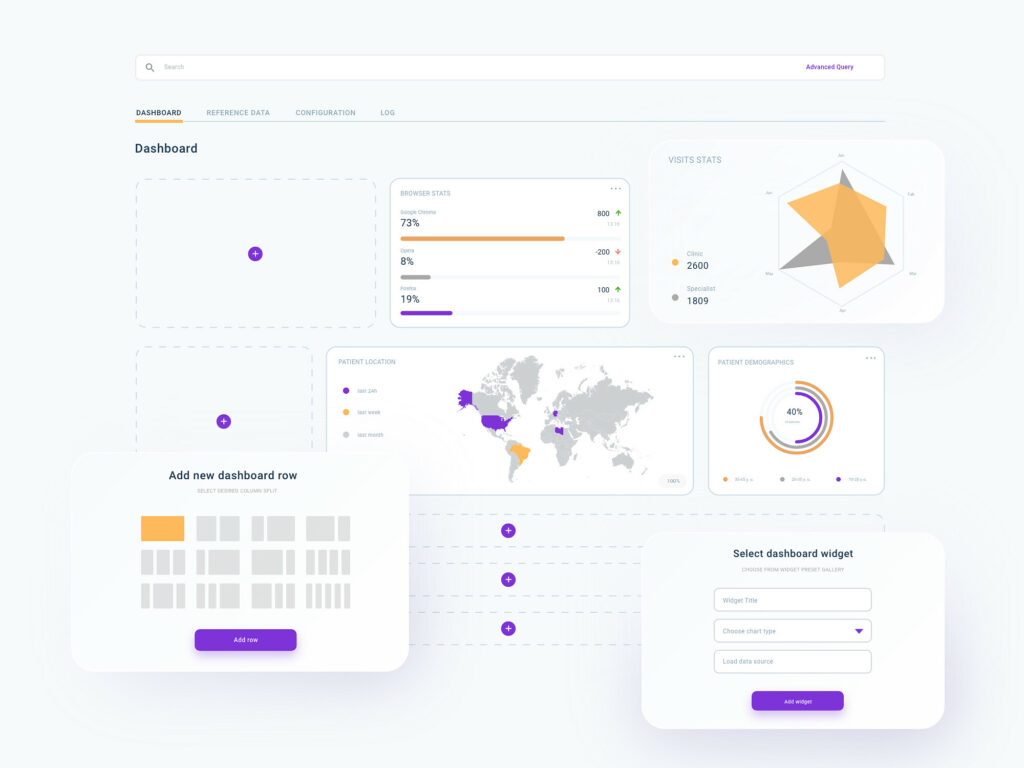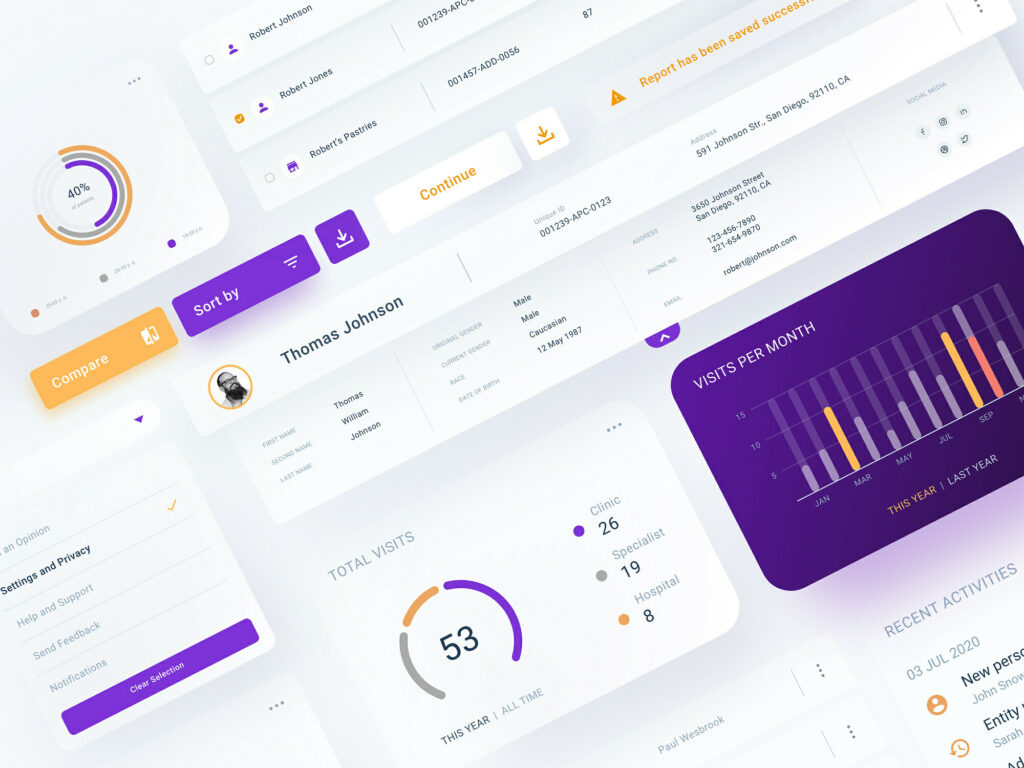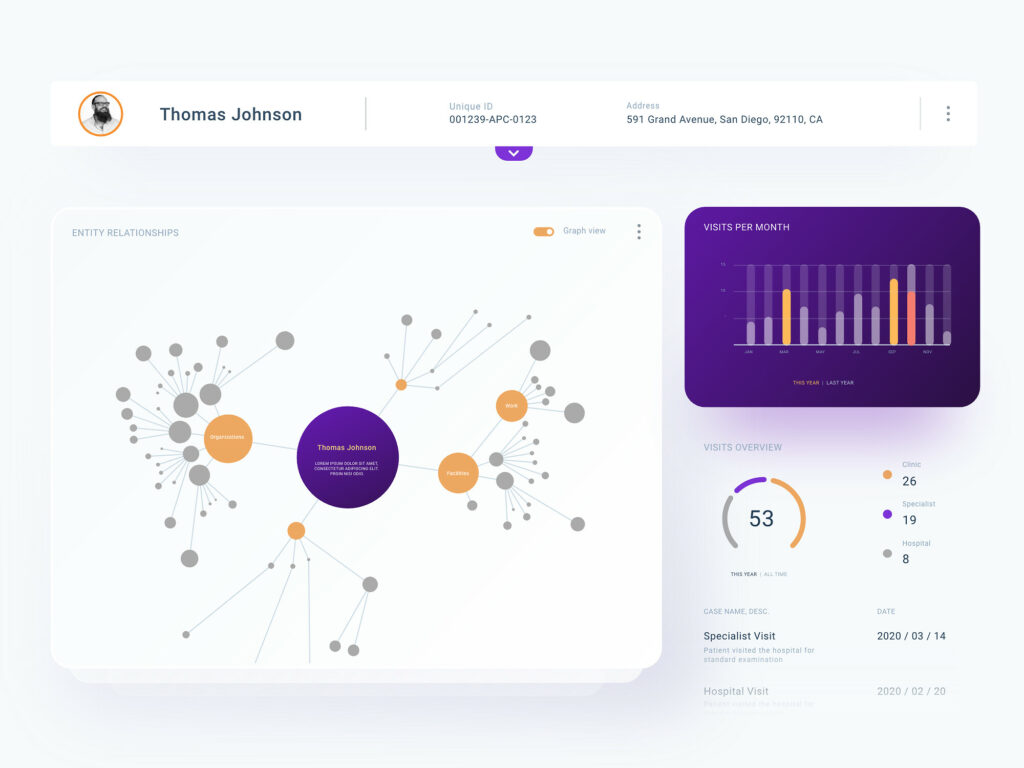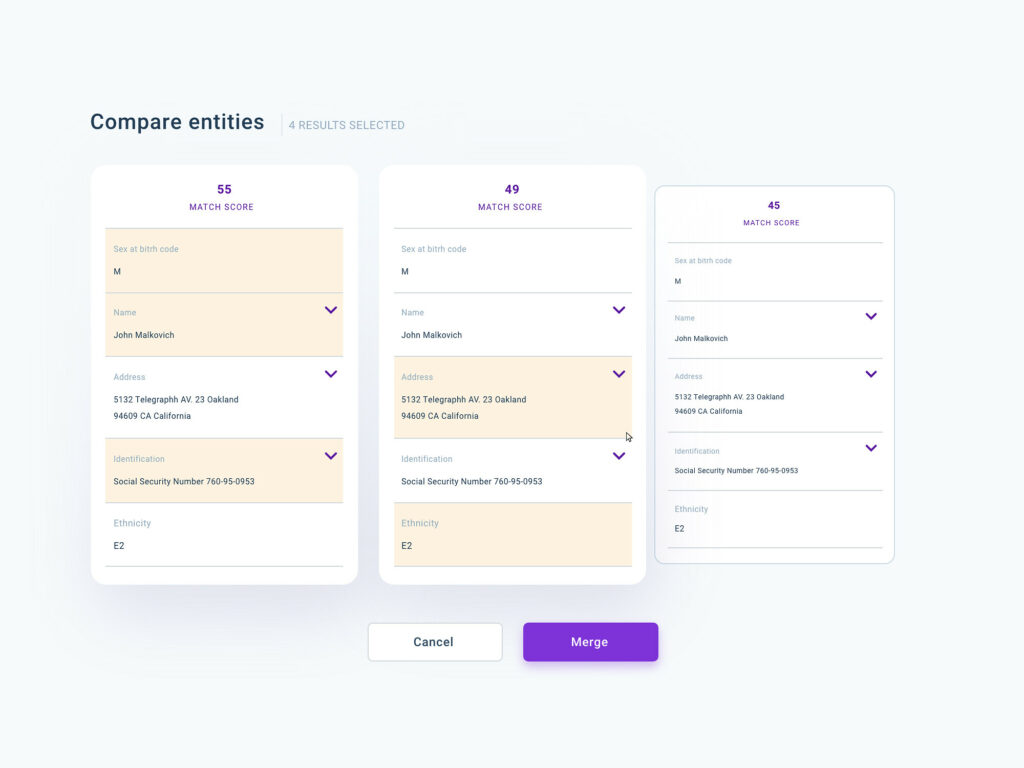
Data Management Tool for Public Sector Organizations Consultancy Agency
Multiple databases lead to severe problems with duplicates, coupling between the applications, or security. That’s why we designed an app to combine visual data residing in different sources and providing users with a unified view of them.
The solution aggregates information from multiple data warehouses and shares a current version of it across an organization so all shared information will flow.
| Client | Public sector organizations consultancy agency |
|---|---|
| Business need | database integration visual tool |
| Scope | design, UI/UX, interactive mockups, frontend |
| Technology | Concept work |
Solution overview

Database health dashboard
The system provides a visual representation of parameters
that testify to the condition of the database. Fully customizable
widgets and numerous parameters allow for good quality
assessment. It is worth paying attention to the spider chart,
which compares databases with selected parameters.
Single-record view
This view focuses on a specific record to show details, such
as time, personal and identification data, and aggregated
statistics. The user can configure any parameters and save the
patients’ cards on a hard drive or in a cloud.


Database connections
The presented dashboard views allow observation of various
parameters such as temperature, CO2 concentration, and
humidity level in the halls or rooms. The dispatcher (admin)
can read the number of people in a given area thanks to the
LTE/4G/5G GSM receivers’ numbers logged into the network
at that particular moment.
Duplicate records AI
In case of databases overlapping, the system presents duplicated data allowing the user freedom of action. If some tiny
differences appear in records, with the use of artificial intelligence, the automatic connection is on.

Database Management Tool to Solve Complex Data Challenges
It’s common for multiple database users to experience duplicates, coupling between applications, or security problems. The presented app enables using visual data in different sources and provides users with a unified view.
It also aggregates datasets from multiple warehouses and shares the current version across an organization to enable correct information flow.
Benefits of Database Management System
Enriching data records and analytics to provide the most accurate information
Database quality scoring with excluding duplicates and false information
Supporting business intelligence with interactive dashboards and diagrams